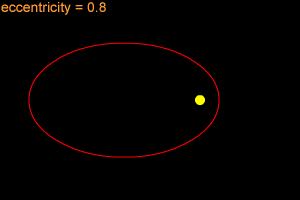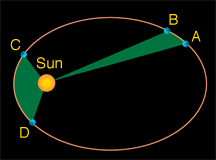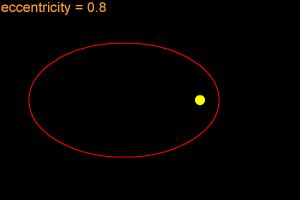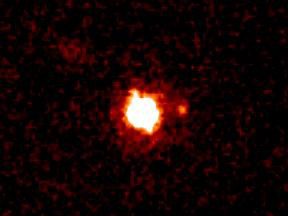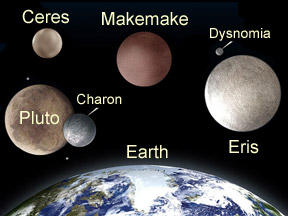Perihelion and Aphelion
The planets in our Solar System orbit the Sun. The orbits of some planets are almost perfect circles, but others are not. Some orbits are shaped more like ovals, or "stretched out" circles. Scientists call these oval shapes "ellipses". If a planet's orbit is a circle, the Sun is at the center of that circle. If, instead, the orbit is an ellipse, the Sun is at a point called the "focus" of the ellipse, which is not quite the same as the center. Since the Sun is not at the center of an elliptical orbit, the planet moves closer towards and further away from the Sun as it orbits. The place where the planet is closest to the Sun is called perihelion. When the planet is furthest away from the Sun, it is at aphelion. The words "aphelion" and "perihelion" come from the Greek language. In Greek, "helios" mean Sun, "peri" means near, and "apo" means away from. When Earth is at perihelion, it is about 147 million km (91 million miles) from the Sun. When it is at aphelion, it is 152 million km (almost 95 million miles) from the Sun. Earth is about 5 million km (more than 3 million miles) further from the Sun at aphelion than at perihelion! Some people think that this is why we have seasons, but they are wrong. Earth reaches perihelion, its closest approach to the Sun and when you might think it should be warmest, in January - the middle of winter in the Northern Hemisphere! The difference in distance is not the cause of our seasons. Instead, seasons are caused by the tilt of Earth's axis. Some planets have very "stretched out" orbits. Pluto, for example, is much further from the Sun at aphelion than it is at perihelion. Astronomers say that a "stretched out" orbit has a high eccentricity, which means it is long and skinny, not round like a circle. Asteroids, many comets, and some spacecraft also travel around the Sun in elliptical orbits. They all have perihelion and aphelion points along their orbits. Anything following an elliptical orbit moves fastest at perihelion and slowest at aphelion. If an object orbits something other than the Sun, we don't use the terms perihelion and aphelion. Satellites orbiting Earth (including the Moon!) have a close point called perigee and a far point called apogee. If you want to know the terms for objects that orbit other bodies, take a look at the advanced version of this page. (Note: If you cannot see the animation on this page, or it is not working properly, you may need to download the latest Flash player.) |
 Interactive animation illustrating shapes of orbits
Interactive animation illustrating shapes of orbits









